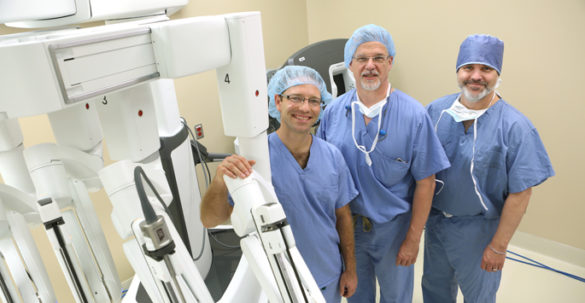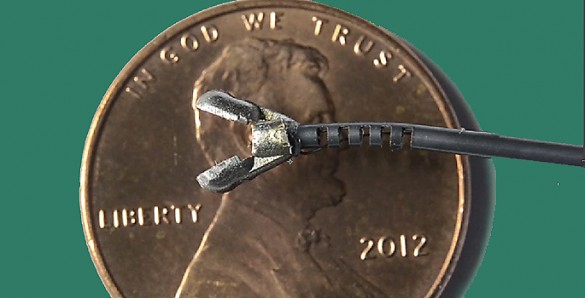The Vanderbilt Institute for Surgery and Engineering (VISE) team of Robert Webster III, PhD, and Duke Herrell, MD, have received a $2.2 million grant from the National Institutes of Health to develop a new surgical robot for endoscopic transurethral prostatectomy.

The mechanical engineer (Webster) and urologic surgeon (Herrell) are collaborating to design a less-invasive robotic system that will allow the removal of the prostate through the urethra and dexterous reconstructive suturing by surgeons. The innovation of the project, “Robot-Enabled Natural Orifice Prostatectomy,” is the ability to deliver the needle-sized robotic arms through a standard endoscope, a concept jointly invented by Webster and Herrell.
The needle-sized arms are made up of telescoping, curved elastic tubes that provide the surgeon with two tentacle-like arms at the tip of the endoscope. This is the first rigid endoscopic robotic system to provide two-handed dexterity at this size.
“Making complex endoscopy easier is a game-changer for multiple surgical and interventional specialties, and most importantly for patients,” said Herrell, professor of Urologic Surgery, Biomedical and Mechanical Engineering, and director of Minimally Invasive Urologic Surgery and Robotics at Vanderbilt University Medical Center.

Prostate cancer is the most common cancer in men, with one in seven men receiving the diagnosis in their lifetime. Ninety thousand men undergo invasive prostate cancer surgery every year. The project aims to make the surgery much less invasive by introducing the tiny surgical instruments through the natural opening provided by the urethra. If successful, this will eliminate the need to cut through healthy tissues from the abdomen into the pelvic area, with less disruption to the nerves that control continence and erectile function.
“The concentric tube idea lets us make our manipulators an order of magnitude smaller than the surgical robots doctors use today,” said Webster, Richard A. Schroeder Professor of Mechanical Engineering at Vanderbilt University. “This, along with accessing the prostate from a natural orifice, will dramatically reduce surgical invasiveness, helping patients heal faster.”
Webster and Herrell are co-principal investigators for the project, RO1 EB026901, and it involves collaboration between the Vanderbilt School of Engineering and the VUMC Department of Urology. The project will be conducted in the new state-of-the-art VISE facilities in Medical Center North on the main VUMC campus.















